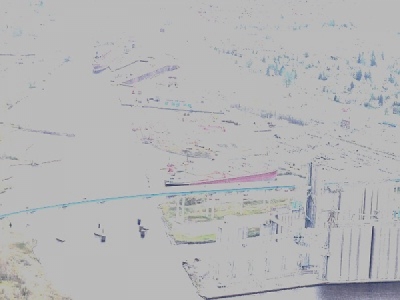
Posted on March 14, 2017
By Shelley Nelson, Duluth News Tribune
The city of Superior is lending its support — and a long-closed landfill on Wisconsin Point — to a plan to clean up Howard’s Bay despite opposition from the Fond du Lac Band of Lake Superior Chippewa.
The project, now years in planning, will remove contaminated dredge from Howard’s Bay, also known as Howard’s Pocket. Mildly contaminated dredged material — meeting non-industrial standards — will be placed over the cap of the landfill to resolve settling that allows standing water on the cap to seep into the landfill.
Howard’s Bay is listed as an Area of Concern along the St. Louis River, and is the largest project on the Wisconsin side, said Darienne McNamara, environmental regulatory coordinator and landfill manager for the city. She said the dual project involves dredging the shipping canal that leads to Howard’s Pocket, and cleanup dredging in the bay to address lead, polycyclic aromatic hydrocarbons (PAHs), mercury and tributyltin. About 98 percent of the contamination is lead from ship paint and leaded gasoline.
The cleanup dredging alone is expected to cost about $14 million, and the city’s contribution brings down the cost by about $2 million, McNamara said.
“It’s definitely appropriate for the city to make a meaningful contribution to get this job done,” McNamara said, adding that city runoff is contributing to the problems in the bay.
Some of the dredged material will be taken to a contaminated area along Connors Point and will be capped. Some of the dredge will go to Erie Pier, maintained by the Army Corps of Engineers, and the remainder will be placed at the Wisconsin Point Landfill — the city’s contribution to the project.
McNamara said it wasn’t the only site considered but it was the most cost-effective solution with the capacity to handle the project. She said with settling on the cap of the landfill that closed in 1980, water collects in the low spots and seeps into the garbage. The landfill was constructed in the 1950s without a liner.
“Without a liner, it’s really important to keep water off the landfill and prevent leeching,” McNamara said.
Dredged material that would be placed at the landfill would be adequate for non-industrial uses, such as residential and commercial uses, and vegetation would be maintained at the site and improve recreational uses for the site, she said. She said only about 0.01 percent of the material coming out of the bay is contaminants.
McNamara said erosion control for the landfill will be more stringent than state standards.
At a Superior City Council meeting last week, Chuck Walt of the Fond du Lac Band of Lake Superior Chippewa presented councilors with a tribal resolution opposing the placement of dredge materials on Wisconsin Point, and a technical document prepared by the tribe’s environmental staff who didn’t come to the conclusion that putting contaminated dredged material near Lake Superior was a good alternative.
“We are not opposed to cleaning up Howard’s Bay or the estuary area there, but very clearly, we see this as basically taking contaminants out of our front yard and putting them in our backyard for a long period of time,” Walt said. “The proximity to the lake — the biggest freshwater source in the world — to deposit those kinds of contaminants there is a concern.”
He said while he agrees the project is good for economic development and the community, Wisconsin Point is the wrong place for the dredge materials.
James Farkas, a past board member of the St. Louis River Alliance and chief operating officer at Fraser Shipyards — a partner in the project — said he supports the project for multiple reasons, from the environment and recreation, to tourism, and for purely rational reasons.
“The funding is available now; it may not be in the future,” Farkas said. “The time to do this project is now.”
Noting concerns about placing the dredged material on Wisconsin Point, Superior City Councilor Graham Garfield suggested sending the plan back to committee, but the motion failed. The City Council then approved a resolution with a 7-2 vote defining the city’s role in the project.
Garfield and Councilor Esther Dalbec voted against the resolution.
About 80,000 to 90,000 cubic yards of sediment is expected to be spread across the Wisconsin Point Landfill.
The project, which includes the Wisconsin Department of Natural Resources and U.S. Army Corps of Engineers, is slated to get underway next year.
Source: Duluth News Tribune





